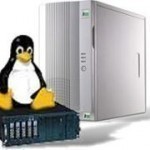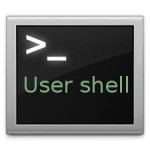List Logged In Unix Users Unix has many commands to list users who are logged in. These commands include ‘w,’ ‘who,’ and ‘users:’ $ w 9:51PM up 99 days, 5:39, 2 users, load averages: 0.83, 0.90, 0.90 USER TTY FROM LOGIN@ IDLE WHAT will p0 c-66-164-235-73. 8:11AM – w spencer p3 c-66-164-235-73. 8:26PM 1:24 pine $ who will ttyp0 Jul 26 08:11 (66.164.235.73) spencer ttyp3 Jul 26 20:26 (66.164.235.73) $ users spencer will List All Unix Users To list all users on a Unix system, even the ones who are Read More
Unix Scripts

A Unix script is a program which is written in a programming language built into one of the Unix shells. If you can type commands into the Unix shell, you can write a shell script. A shell script can be as simple as a text file containing a list of commands. Let’s say that you frequently FTP to the server ftp.ox.ac.uk. You could create a Unix script called “ox” to FTP to that server automatically. This would save you typing everytime you connected. Your simple Unix script could contain just Read More
Configuring a Linux Mail Server

Configuring Linux Mail Server Linux Mail Server The main purpose of the mail server is concerned with to receive and send emails. S Software applications are used to manage incoming of emails from any other server and to forward it to the destination. There are many web hosting services which provide mailing facilities along with web space and the most popular mail server is Linux. The Linux mail server could be used for implementation for real time and there are many optional features, which are offered by the Linux mail Read More
Bootable Linux Distributions
Bootable distributions of the Linux operating system are becoming very popular for use in securing networks, testing network security, and conducting forensics after suspected intrusions. Local Area Security Linux Local Area Security Linux is a 'Live CD' distribution with a small footprint. Containing over 200 information security and administration related tools, as well as a full desktop environment and office productivity applications. With such a small footprint L.A.S. Linux can be optionally loaded and run from physical RAM (assuming there is 256MB or more). F.I.R.E F.I.R.E. is a portable bootable Read More
.profile (Shell Script)

.profile is a Unix shell script which is executed for a user every time that user logs in. A standard .profile will set important environment variables such as $PATH and may also run commands, such as `fortune`. The .profile file will be stored in the users home directory. .profile is used by the Bourne, Korn, and Bash shells. The C and TCSH shells use startup files called .login and .cshrc instead. In addition to .profile, the Korn shell also uses a startup file called .kshrc. Also, the /etc/profile shared startup Read More
How to Change Your Shell

Under some version of Unix, users can use the `chsh` or `passwd -e` commands to edit the shell configured for their account in the passwd file. Under other Unix variants, only the root user can use these commands. Your shell is defined in the last field of the password file. If you have “root” privileges, you can edit the password file to change your shell. If you change your shell to an invalid shell, you will not be able to login again to repair your error. In this example password file Read More
Rootkit
A rootkit is a type of computer malware that is created to hide programs or other computer processes from detection from both users and antivirus software programs. Once installed, a rootkit will typically obtain administrator or higher-level permissions on the infected computer. Although rootkits originated with the UNIX operating system by providing root access to the software components installed with the malware (the kit portion of the name), they have since been developed to provide potentially rogue actors with access to computers running the Windows and Mac OS X operating Read More
Installing PPP on Linux Server
Point to Point protocols are used in Linux as kernel drivers and PPP daemon (pppd) or services. HDLC is data link protocol is installed on kernel as physical layer protocol for serial devices. When you have installed this module already then you do not need to install a serial device like external modem which is attached to any of serial ports. Internal modems need some special drivers for device installation and hardware detection software detects internal modem while initial operating system is installed when system is restarted first time. Kudzu Read More
Run Level
Most versions of Unix use different run levels to define different operational and security states of the Unix system. The `init` command is used to change the run level. Other commands which change the run level include reboot, halt, and shutdown. RedHat Linux Run Levels Run Level Description 0 Halt 1 Single user mode 2 Multiuser, without NFS 3 Full multiuser mode 4 Unused 5 X11 6 Reboot Solaris Run Levels Run Level Description 0 PROM mode. It is used to bring a running system to the OK prompt, either Read More
How to Use the Unix Top Command
Top is a small, but powerful program on both Unix and Linux systems. Its purpose is to allow users to monitor processes on their system. It has two main sections. The first displays general information such as the load averages, number of running and sleeping tasks, and overall CPU and memory usage. The second main section displays a sorted list of processes (usually by CPU usage) and shows their PIDs (Process ID number), the user who owns the process, running time, and CPU and memory that the process uses. As Read More


Share on: